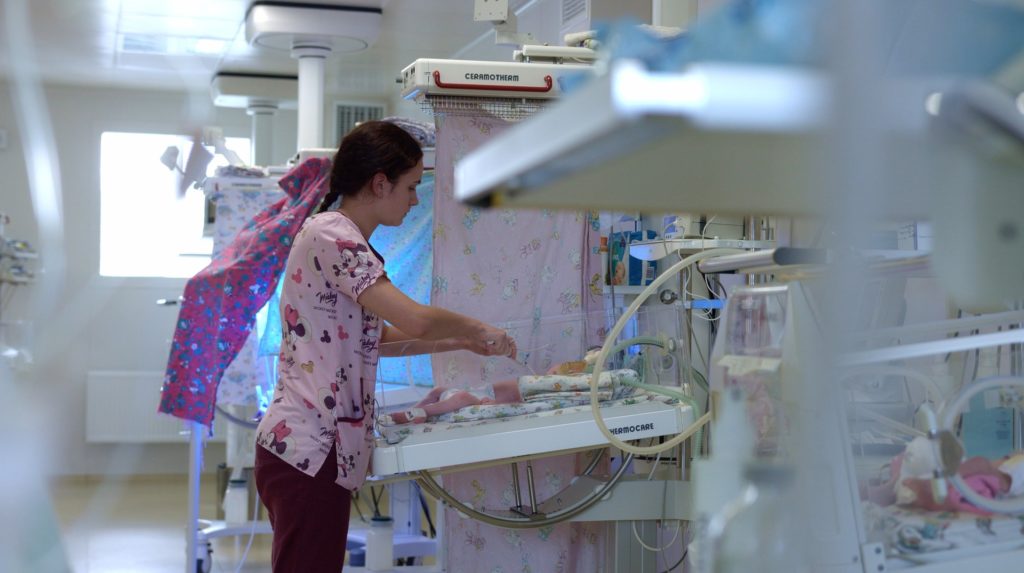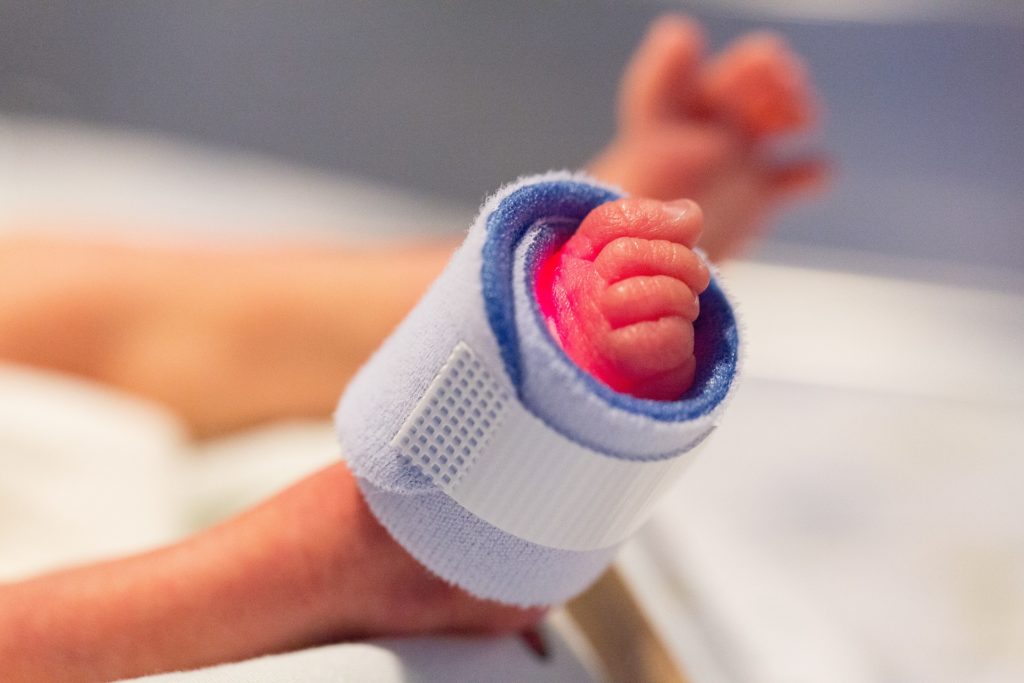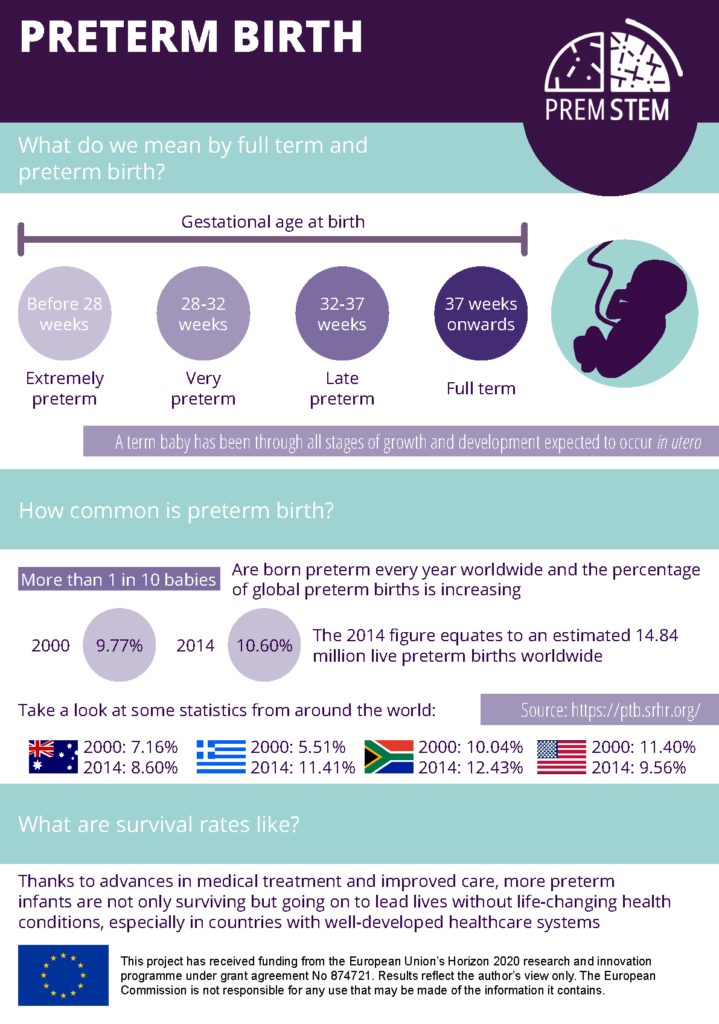Our research explained
Preterm birth
Overview
Being born early disrupts important developmental and growth processes taking place during the pregnancy.
The 37th week of pregnancy, approximately the 9-month mark, is the time at which we say a baby is ‘full term’. A term baby has been through all stages of growth and development expected to occur in utero and is ready to enter the world.
A baby born before 37 weeks of gestation have been completed is described as having been born preterm or prematurely. There are different ways to categorise how preterm an infant is, depending on how early the baby arrives.
Definitions of preterm birth
Extremely preterm – born before 28 weeks
Very preterm – born between 28 and 32 weeks
Late preterm – born between 32 and 37 weeks
Statistics
While most babies are born at term, preterm birth may be more common than you think. Around 15 million babies are born too soon every year and this number is on the rise.
So far, the earliest preterm baby known to survive was born at 21 weeks and two days. Thanks to advances in medical treatment and improved knowledge about how to care for the most fragile babies, many more infants born preterm are not only surviving but going on to lead lives without life-changing health conditions. This is especially the case in countries with well-developed healthcare systems.
Nonetheless, many preterm babies will go on to need ongoing care throughout their life due to issues resulting from being born too soon.

Causes and risk factors
There are a range of factors which may lead to a preterm birth, although most preterm births happen without warning and can’t be effectively predicted with blood or physical tests. Reasons for a preterm birth include:
- An infection in the mother (e.g., in the kidneys or urinary tract)
- An infection in the womb (e.g., chorioamnionitis, funisitis)
- A health condition such as diabetes or pre-eclampsia (high blood pressure that develops during pregnancy)
- An abnormality (e.g., with the shape of the uterus or a short cervix)
- Having previously delivered a baby preterm
- The mother was born preterm
- A multiple pregnancy (e.g., expecting twins or triplets)
- Age and ethnicity
Certain lifestyle choices can increase the risk of going into premature labour, including:
- Smoking
- Drinking alcohol or taking other drugs during the pregnancy
Stress and environmental factors, including extreme heat and domestic violence, have also been clearly linked to an early labour.
Sometimes labour is brought about early for medical reasons, for example if there is a health risk to either the mother or their baby if the pregnancy continues, such as in the case of pre-eclampsia or a maternal diagnosis of cancer.

Signs of a preterm labour
Signs that a preterm labour might occur include:
- Unusual vaginal discharge or bleeding
- Contractions or cramps
- An unusual persistent lower backache or pain
- A feeling of pressure in the pelvis or abdomen
- The water breaking, which means that the amniotic fluid that the baby ‘floats in’ has started to leak out
What happens in the hospital
When a mother goes into preterm labour and if it’s safe to do so, she may receive medication (tocolytics) to try to delay the birth. This can buy time to prepare for an unexpected early delivery, including moving the mother to a specialised hospital.
This preparation often includes giving the mother an injection of steroids known as antenatal corticosteroids to speed up the baby’s lung development. These steroids are given in the hope of avoiding respiratory conditions linked to immature lungs needing to function before they are fully developed. Magnesium sulphate is quite often given to the mother to help protect the baby’s brain from injury but the evidence that it’s helpful is not strong.
Treatment for the baby
The length of time the baby needs to stay in hospital after an early delivery depends on the medical help they need. Some babies will need help to breathe, feed or regulate their body temperature and may spend weeks or even months in the Neonatal Intensive Care Unit (NICU). Under the supervision of healthcare professionals such as neonatal nurses who have been trained to care for them, babies in the NICU receive specialist attention, equipment, drugs and care.
One type of drug commonly given to the most extremely born preterm born infants is caffeine. The tiniest of babies are not able to control the rhythm of their breathing, meaning that they have long pauses, or apneas, between breaths which is bad for all their organs. Caffeine helps the preterm born infant control the pattern of their breathing, keeping it regular to supply their body with oxygen.

Complications that can occur
Health problems in preterm infants are most strongly linked to two things: how much the baby has been exposed to inflammation and how early the baby was born. Both disturb the natural development in the womb. The organs most typically affected are the baby’s gut, brain and lung.
Outlook
Survival rates of babies born preterm differ according to how early they were born and where they were born, linked heavily to the medical treatment available to them. In high income countries and especially in late and very preterm groups (from 32 to 37 weeks of gestation) survival rates are excellent and improving even among babies born extremely preterm. This is due to improved options to help the immature organs like the lung work. For example, being able to administer antenatal steroids and surfactant to bolster lung function has saved many lives. Many more babies would die without access to steroids and surfactant replacement therapy.
The long-term health outlook for babies born preterm also mainly depends on how early the child was born, with the more significant disability and highest rates of mortality occurring in the smallest babies who are born the earliest in gestation.
Children born extremely preterm (more than 12 weeks before term) are the most at risk for potentially life-changing health conditions including cerebral palsy, other problems with movement and coordination, respiratory illnesses, or hearing and visual impairment.
The outlook also differs according to the individual child and the reasons for the resilience of some infants and the sensitivity of others is something clinicians do not fully understand. We are fortunate that many preterm born children will go on to live a healthy life with no major health concerns, and even a small number of infants born extremely preterm also having good outcomes.


Behaviour
Disruptions to the growth of the brain caused by preterm birth can lead to changes in a person’s behaviour for their whole life. For this reason, people born preterm may act differently to people born at term.

Some preterm-born children may develop at a slower rate to those born at term, for example when it comes to speech and language skills and may need extra support when they’re at school. Both children and adults born preterm are more likely to score lower in tests for verbal fluency and those that measure working memory. This is the memory we use for tasks like listening to a story and putting the events together as it is read out.
Preterm birth can lead to deficits in executive function – the ability of our brain to help us plan, focus attention, remember instructions, and successfully juggle multiple activities at once. Changes in executive memory have also been linked to behavioural characteristics such as hyperactivity, impulsivity and distraction.
Preterm birth is considered a risk factor for a child being diagnosed with a behavioural disorder such as autism spectrum disorder (ASD) and attention deficit hyperactivity disorder (ADHD). Also, although not all people born preterm fit the diagnostic criteria for ASD or ADHD, some will have problems with emotional regulation. This means that they may struggle to relate to or build relationships with others.
Children and adult born preterm are more likely to have higher score on tests that measure anxiety; preterm birth has also been linked to difficulties handling emotions as well as depression.

PREMSTEM's contribution
There are currently no treatments to repair brain injury related to preterm birth, which is known as encephalopathy of prematurity (EoP). Looking after a child with EoP can be challenging for the family, both emotionally and financially. In the case of cerebral palsy care, the lifetime costs to look after one child is estimated to be approximately €1.1 million.
PREMSTEM is investigating human mesenchymal stem cells (H-MSCs) from donated umbilical cord tissue as a treatment option for this type of brain injury. The project is also developing a handheld imaging tool which can help to diagnose brain injury at the cot side using ultrafast ultrasound.
Ultimately, we hope to be able to improve the quality of life for both preterm-born infants and their families.


